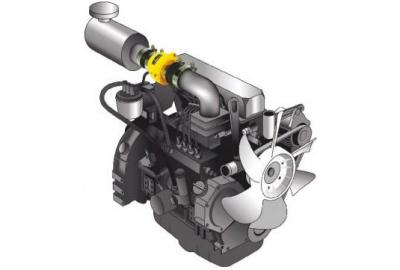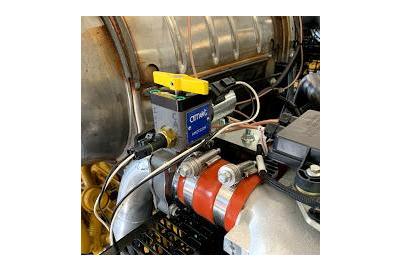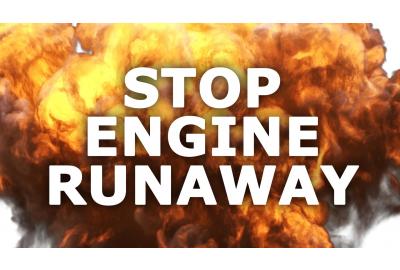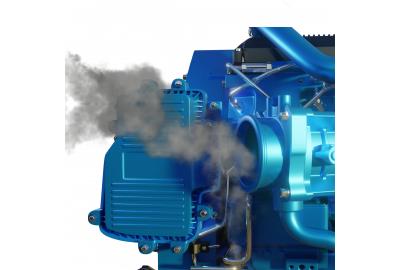Petroleum products play a vital role in our day-to-day lives, and confidence in the safety of the industry’s operations is paramount. Diesel engine runaway is an unexpected danger for the operators of Oil & Gas sites and has led to fatal accidents for companies involved in producing and storing crude oil, petroleum, and refined products.
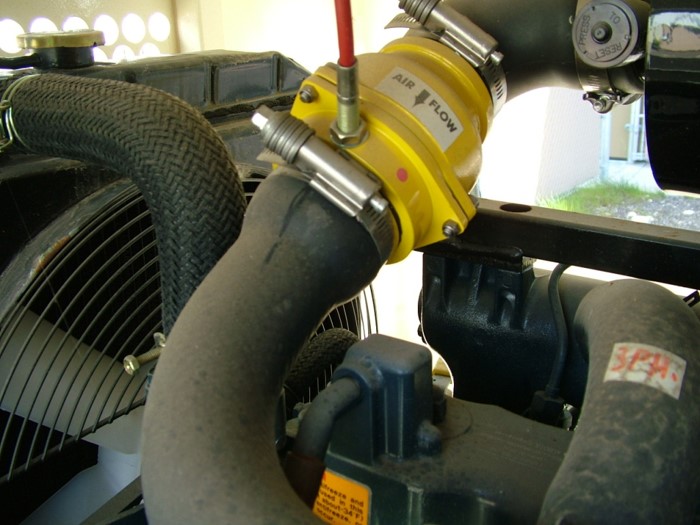 The only proven, reliable method to stop the engine from running away beyond a safe limit is to install an automatic emergency shutoff valve in the engine’s air intake system. Blocking the engine’s air intake effectively cuts off the external fuel source and air supply, so the engine quickly stops, and the ignition source is removed.
The only proven, reliable method to stop the engine from running away beyond a safe limit is to install an automatic emergency shutoff valve in the engine’s air intake system. Blocking the engine’s air intake effectively cuts off the external fuel source and air supply, so the engine quickly stops, and the ignition source is removed.
The Chalwyn D Valve is a unique, airflow actuated air shut off valve designed to protect diesel-powered equipment from engine runaway. It is universally recognized as the first choice for reliable diesel engine overspeed protection. Easy to install, the D Valve can fit a variety of applications including, light towers, portable generators, and most industrial equipment.
The D Valve requires no external electrical or mechanical input, and activation is determined by engine speed exceeding a pre-set point calibrated on the engine. Featuring automatic reset capabilities, the valve also comes with the option of a manual stop or integral air filter option capabilities.
Which Model is Right for My Engine?
Though the D Valve is simple in design and operation, specifying which valve is right for your application doesn’t always follow suit. With many different models available, the process of selecting the correct D valve can seem confusing. However, knowing just a few key details about your diesel engine simplifies this process down to two easy steps.
Engine Power – Horsepower/Kilowatts
The first step in specifying the correct valve is determining the horsepower (HP) or kilowatt (kW) of your engine. The D Valve is suitable for naturally aspirated engines rated from 2 HP (1.5 kW) to 240 HP (179 kW). For turbocharged engines, the valve can be installed on equipment rated at 10 HP (7.5 kW) up to 805 HP (600 kW). Select the valve model so the engine power is in the middle of the range listed in the chart below. If more than one valve meets all requirements, it is normally best to select the larger valve to minimize engine air intake restriction.
Air Intake Size – Inches/Millimeters
After engine power is determined, the next step is measuring the size of the air intake hose or piping. You will need a straight section of pipework, preferably between the air cleaner and the inlet manifold for naturally aspirated engines or between the air filter and turbo inlet for larger engines.
Each D valve model can be manufactured with an inlet and outlet connection within a range depending on the size of the valve.
Metric Units English Units
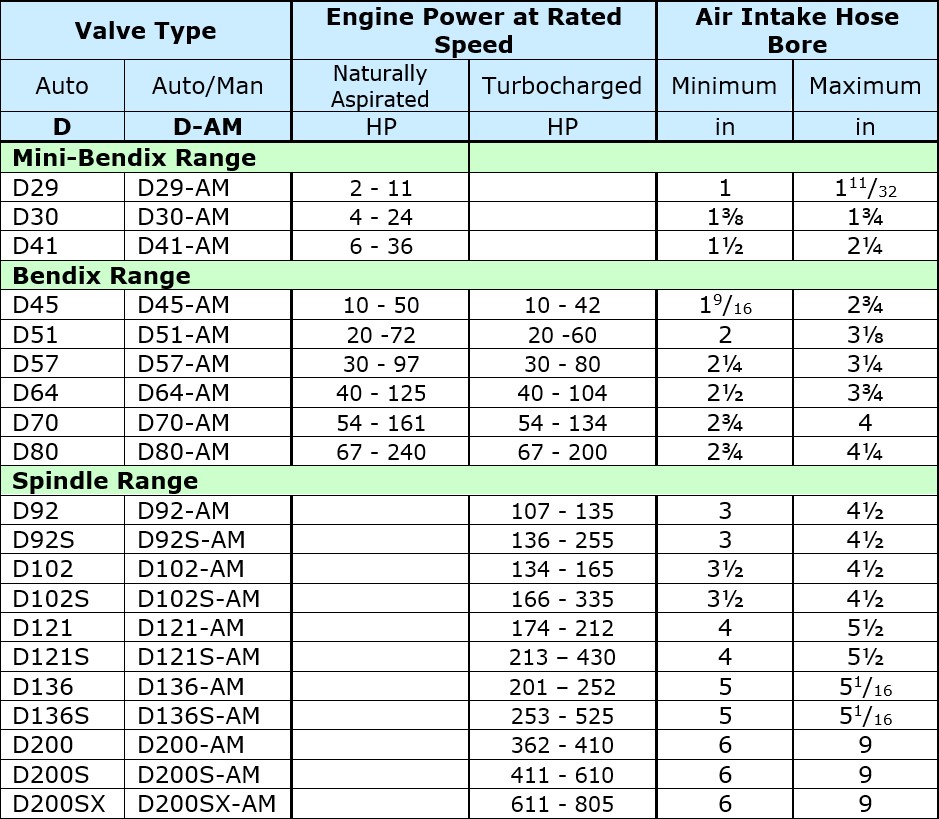
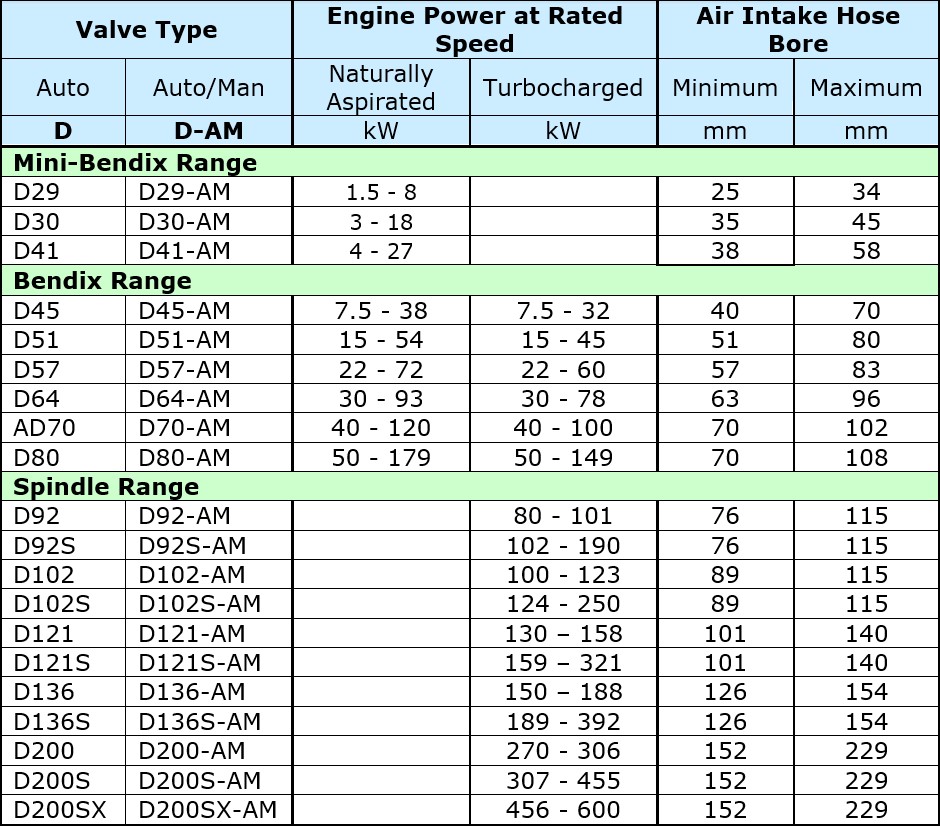
For over 25 years, AMOT (Chalwyn, Rigsaver, and Roda Deaco) has been promoting safety by raising awareness of the explosive risks from runaway diesel engines and educating industry professionals of ways to better protect equipment and employees. We continue to invest in new products, technologies, and solutions to meet the evolving needs of modern engines with increasing performance standards.
Still Having Trouble?
If you are still having trouble selecting the correct valve, our customer service team is readily available in all regions to support you. Contact AMOT today to learn which air shut off system is the best solution for your application.





